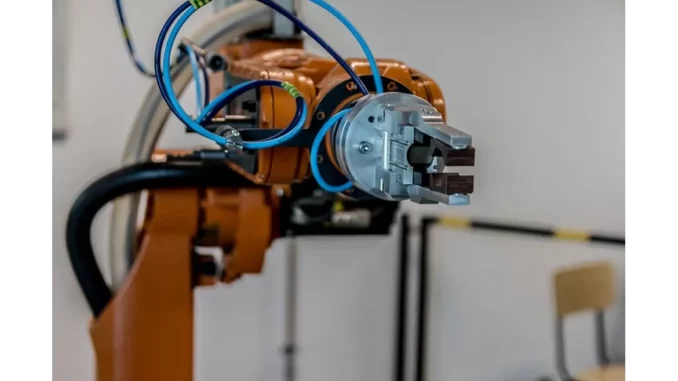
Summary
Robotics Revolution Reshapes Logistics Landscape: Record Growth Predicted
The logistics industry is undergoing a significant transformation with the integration of mobile robots, heralding a new era of efficiency and adaptability. In a conversation with Alex Thompson, a logistics manager at the cutting edge of this technological shift, the critical role of mobile robots in reshaping supply chain operations was highlighted. Thompson described these advancements as “revolutionary,” as the sector braces for a projected 34-fold increase in the last-mile delivery market over the next decade.
Main Article
The Integration of Mobile Robots
Mobile robots are rapidly becoming an indispensable part of the logistics industry, fundamentally altering how tasks are executed across the supply chain. Alex Thompson, a seasoned logistics manager, shared his firsthand experience with the deployment of these robots. “It was like watching the future unfold right before my eyes,” Thompson recounted. Initially met with scepticism, these robots have proven to be transformative, efficiently handling material transportation and mobile picking—responsible for 90% of the market revenue share in 2024, according to IDTechEx’s findings.
Autonomous Vehicles and Delivery Innovations
A key feature of mobile robots is their versatility, particularly with autonomous trucks revolutionising long-haul trucking. “Their role is pivotal,” Thompson explained. “We’re not just moving items within warehouses anymore; we’re covering significant distances, which scales operations immensely.” The most promising development, however, lies in last-mile delivery solutions, where the demand for swift and efficient delivery has surged. With the market for last-mile delivery drones expected to expand dramatically, encompassing delivery vans, sidewalk robots, and drones, Thompson emphasised, “Robots and drones are revolutionising how goods reach consumers.”
Advantages of Mobility and Flexibility
Mobile robots offer distinct advantages over fixed robots, primarily in their mobility and flexibility. “These robots can navigate various environments without the constraints faced by fixed robots,” Thompson noted. Automated-guided vehicles (AGVs) and autonomous mobile robots (AMRs) are designed to operate with minimal human intervention, transitioning seamlessly between tasks and environments. This adaptability is invaluable, allowing for operations to continue with minimal disruption.
Cost Efficiency and Scalability
While integrating mobile robots into existing infrastructures poses challenges, their cost-effectiveness cannot be overstated. “Deploying mobile robots can often be more economical than their fixed counterparts,” Thompson said. Their scalability is a notable benefit—robots can be ramped up during peak demand and scaled back during slower periods, thus avoiding unnecessary costs. The ‘Robot-as-a-Service’ model, identified by IDTechEx, underscores the innovative edge mobile robots provide. Thompson concluded, “This is about future-proofing operations, not just staying competitive.”
Detailed Analysis
The integration of mobile robots in logistics is part of a broader trend towards automation across various industries. The deployment of mobile robots is not solely a matter of improving efficiency but also a strategic move to meet growing consumer demands for faster delivery times. The logistics sector, characterised by tight margins and high operational costs, stands to benefit significantly from the adoption of autonomous technologies. The ability to scale operations according to demand without incurring prohibitive costs is a significant advantage that mobile robots offer over traditional methods.
The rise of ‘Robot-as-a-Service’ exemplifies the shift towards more flexible business models in logistics, allowing companies to leverage advanced technology without substantial upfront investment. This model not only reduces financial risk but also encourages broader adoption of robotics technology, as companies can tailor their robot usage to suit operational needs.
Further Development
As the logistics industry continues to evolve, the role of mobile robots is expected to expand further. Industry analysts predict that advancements in artificial intelligence and machine learning will enhance the capabilities of these robots, making them even more integral to supply chain operations. Thompson’s optimism about the future underscores the potential for mobile robots to redefine logistics over the next two decades. With an interconnected, efficient, and automated supply chain on the horizon, the industry is poised for unprecedented growth.
Readers can expect continued coverage on the impact of mobile robotics on logistics, with detailed insights into how companies are navigating this technological transition. Stay tuned for updates on regulatory developments, technological breakthroughs, and case studies from leading logistics firms embracing this robotic revolution.

